About us:
We are a group of UBC students who are a part of the Land and Food Systems faculty and are currently enrolled in the LFS 350 class.
We want to introduce you to our individual members and how our experience and interests have lead us to a group project on a Legion:
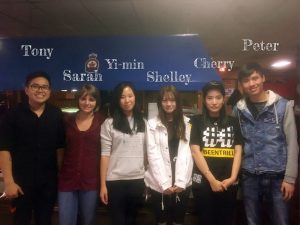
- Tony Guang, Global Resource Systems Major, Food and Resource Economics Specialization
Tony’s area of study lies in Social Development, and Economical Sustainability. As a Global Resource systems student, he is interested in the interactions and relationship between human civilization and the natural environment that surrounds them. He is currently a freelance photographer, with prior projects that include documenting the First Nations peoples protest over sovereignty in the Fraser River, and also, the story of the Maya in Exile Garden at the UBC Farm. Currently, he is working on is awareness work for Vancouver First Nations Health Society. As an organization that serves mainly the senior demographic in their communities, Tony is curious as to how the Legion addresses issues of food and community in their respective branches.
- Yi-Min Ng, Nutritional Sciences Major
She is interested in human nutrition and preventive care. As a nutrition student, she is interested in learning more about accessibility to affordable nutritious food and how it can it can be improved. Yi-Min volunteers at St Paul’s Hospital and is learning about urban health. The Legion is doing its part in the community to help those with food security issues and she is very keen on learning how to help elevate urban health issues through the Legion.
- Hou-Han (Peter) Tseng, Plant and Soil Science Major
Peter is interested in the impact of current biotechnology on food production and food safety. He volunteers at Kitsilano Community Centre, and has helped setting up multiple community events. Those events often offer free food, especially for children. Therefore, with most members being the elderly at the Legion, which is completely opposite to Kitsilano Community Centre, Peter is looking forward to learning how food-related events are held at the Legion.
- Yang (Cherry) Yang, Food Nutrition and Health Major
Cherry is interested in studying the nutrition values of different food. She took a cooking class at Vancouver Community College last year where she met a lot of people who shares her passion for food. She was able to apply what she learned in real life settings, such as cooking healthy food. She is interested in food nutrition and is looking forward to learn how the Legion provides nutritious food to the elders.
- Yueyue (Shelley) Shi, Food Nutrition and Health Major
Shelley is interested in nutrition of food, and the process of food, food engineering. She is a volunteering member of Canucks Autism Network (CAN), an organization which provides year-round activities for individuals, and families living with autism. She loves to join community organizations, and she would to love to learn more about how the Legion contribute to the community by assessing the food system of the Legion.
- Sarah Walters, Food Nutrition and Health Major:
Sarah is interested in helping others through nutrition and lifestyle changes. This passion has lead Sarah to study at UBC in the hopes of becoming a Registered Dietitian and seek experience in cooking class programs. Volunteering in kitchen settings has given Sarah the insight on how kitchens can provide nutritious meals for people and can be an enjoyable experience at the same time. Sarah believes that strengthening a kitchen asset, such as a Legion’s kitchen, and incorporating the community to make food is a great way to help solve food related issues.
Group interests, goals, reasons for choosing project, and what we wish to gain from our experiences in LFS 350:
As a trans disciplinary group of students from the Land and Food System Faculty, we felt that our common interests resided in our passion for food and the ability it has to bring community together. The Legion was the majority of our group member’s first choice as a project. We are interested in gaining more insight into the intricacies of the food system through the lens of a local community organization such as the Legion. Analysis of this organization using an Asset Based Community Development (ABCD) approach, will hopefully allow us to better identify community assets and understand community development (Mathie, A., & Cunningham, G.,2003). The City of Vancouver Food Strategy (2013) aims to increase the amount of food assets in the Vancouver by 50% by 2020. As Vancouver’s mission is to create a more “just and sustainable food system” (Vancouver Food Strategy, 2013), and as students we hope that our experiences in this project will allow us to become more adept at identifying assets to address organizational and societal needs to one day realize this goal. We believe that this experience will help us develop skills in working collaboratively as a team and will give us insight into ways that we can help an organization and approach problem-solving in a community.
Our project objectives and about the Legion:
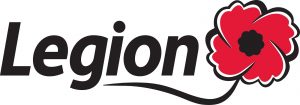
The Royal Canadian Legion supports veterans and the community by hosting events and community nights and providing financial assistance. The Legion’s demographic is mostly seniors, with a total of 300,000 members across Canada. The branch that we will be working with is Royal Canadian Legion TV Branch 44.
After WWI, countless soldiers suffered from internal wounds that were not visible externally, in which 12000 veterans were treated for tuberculosis, a type of chest disability (Legion TVS 44, 2009). Without any financial aid from the Canadian government, those veterans formed the Tuberculous Veterans’ Association (TVA), aiming to provide support for the tuberculous veterans (Legion TVS 44, 2009). However, on October 1st, 1925, the TVA merged with Canadian Legion and became the Tuberculous Veterans’ Section (TVS) (Legion TVS 44, 2009). A year after, the Vancouver TV Royal Canadian Legion (Branch #44) was formed embracing the original goal when the TVA was developed (Legion TVS 44, 2009).
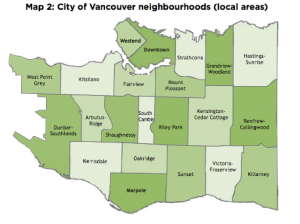
Figure 1: Source: Vancouver Food Strategy (2013)
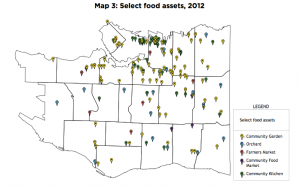
Figure 2: Retrieved from: Vancouver Food Strategy (2013) pg. 25. This figure shows the location of food assets in Vancouver. This does not include some classifications of food assets such as major store chains and restaurants.
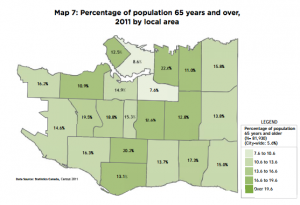
Figure 3: Retrieved from: Vancouver Food Strategy (2013). This figure shows the percentage of seniors in the population of different areas in Vancouver.
Upon comparing Figure 2 to Figure 3 above, it can be seen that in some areas where there are higher percentages of seniors, such as Marpole and Oakridge in South Vancouver, there are less community-based food assets. The development of local community food assets is crucial in developing resiliency in Vancouver’s food system (Vancouver Food Strategy 2013) and create lasting social change (Mathie, A., & Cunningham, G., 2013) in community development. With a disproportionate representation of physical food asset density to senior population density, questions can be raised about the fair accessibility of these food assets, especially in a demographic where transportation and mobility can be the largest inhibiting factor to accessibility (Kloppenborg, 2010).
Using this asset-based community development approach, we are interested in how a community organization, such as a Legion Branch, can further utilize community-based food and social assets, defined as: “resources, facilities, services or spaces that are available to Vancouver residents, and which are used to support the local food system” (Vancouver Food Strategy, 2013). We believe that this can help strengthen communities and their food systems, while meeting the Legion’s organizational needs at the same time.
We hope to gain a better understanding of a small part of the Vancouver food system by communicating with community stakeholders. The City of Vancouver has identified that the senior population is an at-risk demographic within this city to be food insecure (Vancouver Food Strategy, 2013; Kloppenborg, 2010), however with not much readily available data (Kloppenborg, 2010), this may be a great opportunity to explore questions and gather information that has never been looked at before. Our contributions will hopefully help improvements of the Legion’s stance on serving not only Canada’s veterans but also their local communities.
Our objective for the project is to analyze the institutional food system of the Legion by assessing the food storage, food preparation and waste disposal infrastructure. We will also assess what external food sources the Legion uses. We will inquire about the activities that the Legion provides and how many are food-related. Meanwhile, we will be looking for relationships between the Legion’s organizational goals and the community food assets as well as the link between Vancouver City goals and the Legion’s food assets. We hope to provide resources and knowledge to the Legion to help build a safe, food-friendly environment between the Legion and its community.
Our first impression:
Most of our group members had never been to a Legion before our class visit at the West Point Grey Legion (#142). We did not know what connections Legions have with their community until we listened to the respective branch manager speak about their community involvement and who supports them. We were surprised by the capacity to which Legions give to help others, and how they receive donations from organizations such as Safeway – whom sponsor the Legion in providing vouchers for those with extraordinary and/or financial needs. We were surprised to learned how this branch was downsizing due to increases in property taxes (up to $50,000/ year); this revealed to us that the Legion has to prioritize where they are budgeting their money.
We started our project by calling our assigned Legion Branch (044) in the Hastings- Sunrise neighbourhood, to ask about their opening hours. In the hopes that we could go to the Legion and learn more about it, as seen in (Fig. 1) the Hastings-Sunrise neighbourhood contains no community kitchen as a food asset, and this Legion would be a good place to start as the senior population is also above average, as indicated by (Fig. 2). This phone call would reveal to us that our particular Legion does not have a kitchen or a bar. Similar in Ernesto Sirolli’s Ted Talk: “ Want to help someone? Shut up and listen!” Sirolli talked about participating within the community in an informal setting. He highlights the importance of listening to the community; We are going to the Legion as ‘servants’ as he would call it, rather than outsiders with only theories and big ideas. We will be entering this project with an open mind and will help by providing resources and knowledge wherever it is needed by the Legion. By gaining knowledge about the Legion before we meet with the staff on a formal setting, we will be able to direct our questions to make our communication with them more relevant, and in doing so we bridge the gap from “clients to citizens” (Mathie, A., & Cunningham, G., 2013). Critical to this community development is building a relationship with the experts and professionals, who understand their community better than any foreigner.
When we met the manager of the West Point Grey Legion, he mentioned the community events they host such as barbeques and meat draws for the public. Most of their profit from these events goes to helping veterans and their families. He talked about how the Legion is open to support any organization doing a good cause. The community built around the legion is definitely an important social asset to the development of change in the neighbourhood (Mathie, A., & Cunningham, G., 2003). These community connections (social capital) are crucial in mobilizing and obtaining other assets in the community. Community development would not be possible without the help of other grassroots organizations to provide information and resources, but also in shifting power to decide their food system back to these communities (Allen, 2008; Mathie, A., & Cunningham, G., 2003)
Following the principles of Asset-Based Community Development (ABCD) by Mathie and Cunningham (2013), the Legion is already contributing to community growth. ABCD strives for a community development brought about by the people involved in the community with existing resources. According to Mathie and Cunningham, ABCD uses ‘social assets’ : “talented individuals, and the social capital inherent in the relationships that fuel local associations and informal events” (2013). It builds on a foundation in the community through the sharing of achievements, having motivated individuals to better the community and building strong relationships with other organizations. The Legion, thus is in a position where it can be the catalyst for change. By learning about the Legion in person, we can hear about the stories of successes that the Legion has had in the past, which is a method of community mobilisaton and is the initial step in asset-based community development (Mathie 2003). With further analysis, our group would help out with mapping the community assets to show opportunities for building relationships (social asset) and leveraging more resources (physical assets). We will be facilitating a more community driven development as compared to a needs-based development.
Lastly, Patricia Allen’s mentions in her paper, “Mining for Justice In The Food System: Perceptions,Practices, and Possibilities”, describes how academics have an important role to play in community development, through the helping people understand the “power of discourse and ideology, opening up discussion of the meaning of individualism and its corollaries such as choice, merit, and blame.” (2008) This inspired in us, the confidence in our belief as university students, that we could help a community. An important note that Allen points out, is that without a specific focus on food justice, we might unknowingly create a ‘two -tiered food system’ where it creates a “marginalized, safe space” only for the privileged (Allen, 2008). However, he further explains to us, that as academics, once we realize that “social and ecological problems are the result of social choices, [we] will feel more empowered to participate in their resolution” (Allen, 2008). While we are working with the Legion to assess food and food related infrastructure, it is also important to engage with individuals within the Legion, in order to fully understand and implement ABCD. Thusly, the more we get to know the community, the more effective our presence in the Legion will be.
Works Cited:
Allen, P. (2008). Mining for justice in the food system: perceptions, practices, and possibilities. Agriculture and Human Values, 25(2), 157–161.
Ernesto Sirolli: Want to help someone? Shut up and listen!. (2016). YouTube. Retrieved 1 October 2016, from https://www.youtube.com/watch?v=chXsLtHqfdM
Kloppenborg, A. (2010, October 10). Seniors In Vancouver (Canada, Social Policy Division, City of Vancouver). Retrieved October 05, 2016, from http://vancouver.ca/files/cov/Seniors-Backgrounder.pdf
Mathie, A., & Cunningham, G. (2003). From clients to citizens: Asset-based Community Development as a strategy for community-driven development. Development in Practice, 13(5), 474–486.
Pothukuchi, K., & Kaufman, J. L. (2000). The Food System. Journal of the American Planning Association, 66(2), 113-124. doi:10.1080/01944360008976093
“Royal Canadian Legion TVS Branch 44.” RSS. N.p., n.d. Web. 01 Oct. 2016.
Social Policy Division, City of Vancouver (Kloppenborg, 2010)






